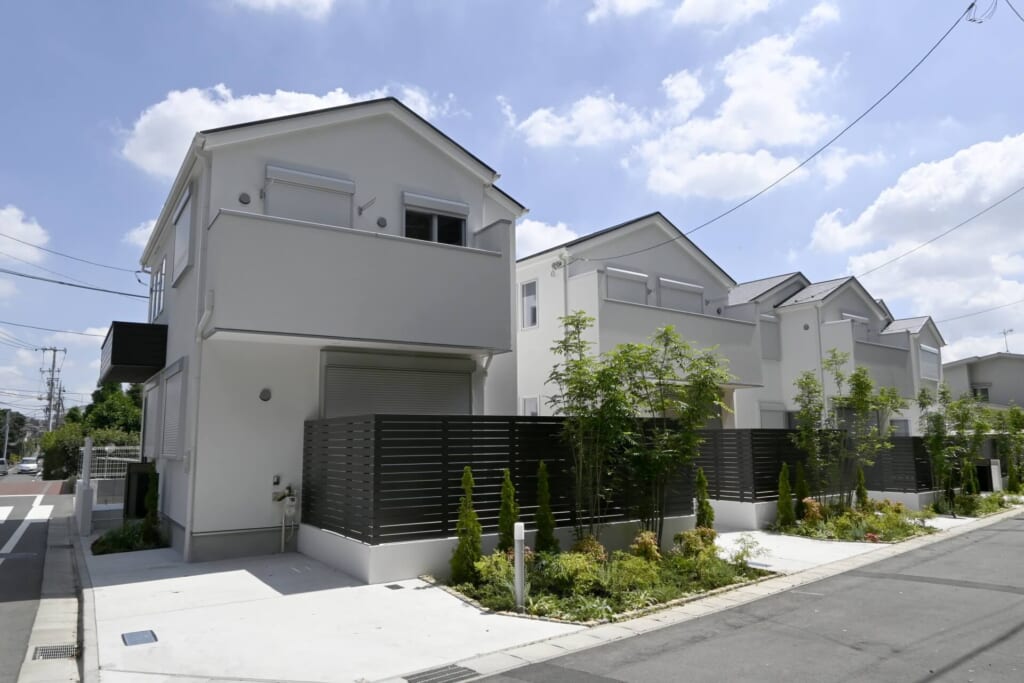Complete Guide to the Latest Trends in the Japanese Real Estate Market
Complete Guide to the Latest Trends in the Japanese Real Estate Market

The Japanese real estate market is constantly changing. Keeping up with the latest trends in the Japanese real estate market is essential for investors. With Japan’s economic growth, the real estate market is also regaining vitality. Urban areas, in particular, are attracting the attention of foreign investors, leading to increased demand and prices, thus creating more investment opportunities. Conversely, in some rural areas, demand is decreasing due to population decline.
Overall, Japan’s real estate market is stable and a safe investment destination when viewed from a long-term perspective. When considering real estate investment, it is important to understand the characteristics and demand trends of each region and evaluate risks appropriately. Understand the trends in the Japanese real estate market and make smart investments.
If considering real estate investment in Japan, getting support from expert might be interesting to have a better overview on Japanese real estate market and its trends.
Overview of the Japanese Real Estate Market
The Japanese real estate market is diverse and complex. Demand and trends differ between urban and rural areas, making it important to understand the overall picture.
In metropolitan areas and major cities, demand is expanding due to increased investment and tourism from abroad. Particularly in urban areas, demand for luxury residences and commercial facilities is growing, accompanied by rising prices. On the other hand, rural areas are experiencing a decline in demand due to population decrease and depopulation.
Real estate prices vary significantly by region. High-value transactions are conducted in metropolitan and economic centers, while prices are sluggish in some rural areas. There are also differences in demand for commercial real estate, such as offices and retail properties, depending on the region.
In the long term, the Japanese real estate market is considered stable. Although there are fluctuations in land prices and demand, real estate investment is generally viewed as a safe investment. The future Japanese real estate market is expected to change with various factors such as urban development and infrastructure improvements, as well as changes in demand and supply.
In the future, the market is expected to fluctuate due to changes in demand and the characteristics of each region. When considering investment, it is important to understand the characteristics and demand trends of each region and assess risks accordingly.
Market Value Analysis

Analyzing market value in the Japanese real estate market requires considering multiple factors.
First, the balance of supply and demand in the region is crucial. In urban areas and regions with anticipated economic growth, demand increases, leading to rising values. Conversely, in rural areas and regions with population decline, values are likely to decrease. Future infrastructure improvements and development plans also impact market value.
Additionally, surrounding environments and transportation access are important factors. Analyzing these elements comprehensively and understanding the market value of each region is important. When considering real estate investment, thoroughly analyzing market value and evaluating future prospects are necessary.
Market Value by Region
Market value in the Japanese real estate market varies widely by region.
The Tokyo metropolitan area (Tokyo, Kanagawa, Chiba, Saitama) has very high demand as the economic center, and property values are stable. Particularly in urban areas, real estate prices are significantly rising due to foreign investment inflows and expanding office demand. Similarly, core cities like Osaka and Nagoya have stable demand and high market value. Conversely, rural areas are experiencing value declines due to population decrease and aging populations.
Understanding market value by region enables investors to evaluate risks appropriately and choose suitable investment destinations. While metropolitan and core city real estate is expected to have demand, caution is needed in rural areas where demand is declining.
Detailed Data by City
Understanding the Japanese real estate market requires detailed data by city. In major cities like Tokyo, prices are rising with increasing demand. Economic zone development and Olympic-related facility construction have significantly changed the supply and demand for real estate investment. In contrast, rural cities are experiencing demand decreases due to population decline and aging. Since market conditions and demand trends vary by city, understanding each city’s characteristics and regional data is essential.
In Tokyo, demand is increasing in the 23 wards, especially in central and emerging areas, leading to rising rents and prices. Offices, commercial facilities, and luxury residences are attracting attention. Similarly, core cities like Osaka and Nagoya are experiencing demand increases due to redevelopment and urban planning. Each region has different characteristics, so analyzing regional data is important for real estate investment.
Additionally, infrastructure improvements, transportation access, and surrounding environments are important perspectives. Analyzing these data comprehensively and predicting future market trends are keys to smart real estate investment.
Transaction Volume and Value
Transaction volume and value in the Japanese real estate market are important data for understanding current market conditions. Transaction volume refers to the number of property transactions in the real estate market, while transaction value refers to the total value associated with these transactions.
In recent years, transaction volume and value have increased, particularly in urban areas, due to foreign investor activity and the impact of domestic and international financial policies. These trends affect investment appetite and property values. Major cities like Tokyo are experiencing rising transaction values. Conversely, some rural areas are experiencing declines in transaction volume and value.
Understanding regional differences and demand trends is essential for selecting investment destinations. Continuously monitoring transaction volume and value data and responding to market changes is crucial. Using this information allows for appropriate risk management and successful real estate investment.
Overview of Major Transactions
Major transactions in the Japanese real estate market are concentrated in urban areas. Particularly in metropolitan areas like Tokyo’s 23 wards, Osaka, and Nagoya, office buildings, commercial facilities, and luxury residences attract attention. In these regions, foreign investors and major companies are actively purchasing properties, resulting in high transaction amounts. Office building transactions see high demand for new and redevelopment properties, with expected expansion in rental demand.
Conversely, rising property prices attract risk-tolerant investors. Additionally, in tourist areas and resorts, demand for hotels and vacation homes is increasing, leading to active transactions. These areas are also influenced by tourist numbers and regional revitalization measures. In rural areas, transactions are progressing to address vacant house issues and regional revitalization.
Understanding regional characteristics and demand trends and comprehending transaction overviews are essential for smart real estate investment.
Investor Perspective
What are the important factors when considering the Japanese real estate market from an investor’s perspective?
First, the current state and future potential of the Japanese economy. Japan’s economy continues stable growth, with increasing population in urban areas, impacting the real estate market significantly.
Next, the balance of supply and demand should be considered. Urban areas, especially metropolitan regions, are incorporating foreign demand, with long-term demand expected to exceed supply.
Third, changes in laws and tax systems. Various tax incentives exist for Japanese real estate investment, but future changes may occur, requiring attention.
Additionally, regional growth plans and initiatives, such as infrastructure development and urban redevelopment, are also investment considerations. Investors should comprehensively analyze these factors, understand risks, and choose appropriate investment destinations.
Outlook for Investors
Japan’s real estate market holds promising potential, especially in urban areas and along railway lines, where demand is increasing. New office and commercial facility construction and the rise in foreign tourists stimulate the market. Urban areas have growing demand for high-rise buildings and luxury apartments, providing many attractive properties for investors. Conversely, rural areas face demand declines due to population decrease. Investors must monitor regional demand trends and select carefully.
One outlook is that rents for offices and commercial facilities will continue to rise, as demand is expected to exceed supply. Alongside Japan’s economic growth, property prices along railway lines and in luxury residential areas are also expected to rise. Investors should analyze these trends, assess risks and demand trends accurately, and choose optimal investment destinations.
Overall, Japan’s real estate market, while mature, holds new investment opportunities. By focusing on regions and facilities with expected future demand and conducting thorough analysis, investors can expect stable returns.
Future Market Forecast
Japan’s economic growth is expected to continue, with urban real estate markets remaining active. Foreign investor attention will persist, leading to increased demand and prices. However, some regions face concerns about population decline and demand stagnation. Rural markets vary greatly, making future trends challenging to predict uniformly. It is important to choose investment destinations based on regional characteristics and growth plans.
Market forecasts are crucial for investors’ decision-making. In growing urban areas, investment opportunities are expected to expand. However, regional demand declines necessitate careful market forecasts and risk assessment. Conducting strategic real estate investment with careful consideration of future market trends is essential.
Trends in the Housing Market
The housing market in Japan is experiencing demand changes due to aging and declining population. Urban areas see increasing demand for compact properties for single-person and dual-income households, boosting demand for apartments and condominiums. In suburban areas, family-oriented detached houses and new residential developments are progressing. Recently, sustainability interest is rising, emphasizing eco-friendly homes and renewable energy use.
Additionally, the COVID-19 pandemic has increased demand for remote work and home offices, changing needs for housing layouts and facilities. Homes with office spaces and stable high-speed internet are in demand. Understanding these trends and developing or renovating properties to meet demand is crucial. Flexibly responding to housing market changes and providing properties that meet needs enhances real estate investment opportunities.

Trends in Housing Construction
Recent trends in the Japanese housing construction market reflect various factors. Increased awareness of risks from natural disasters like earthquakes and typhoons drives demand for earthquake-resistant and disaster-resistant building technologies and materials. Aging society also expands demand for barrier-free and care-compatible housing. Additionally, interest in energy-saving and environmentally friendly housing is rising, prompting construction companies and home builders to focus on developing homes that meet these new needs.
Meanwhile, declining housing purchase intentions among younger generations and economic instability pose challenges, increasing demand for affordable and compact housing for young and single households. The construction industry, from major home builders to local construction firms, is adapting to these diverse needs.
These trends indicate a diverse housing construction market with regional differences in needs. Real estate investors should understand housing construction trends in specific regions and consider future demand when developing investment strategies.
Analysis of Vacancy Rates
Vacancy rate analysis is crucial for understanding the Japanese real estate market.
In urban areas, diverse demands from foreign tourists, students, and working holiday participants result in relatively low vacancy rates. Conversely, rural areas face severe vacancy problems due to population decrease and aging, increasing vacancy rates.
The COVID-19 pandemic temporarily increased vacancy rates in some regions. Thus, understanding regional vacancy rates and future demand stability is vital when selecting investment properties. Evaluating factors such as stable demand and future demand prospects is essential.
Even properties with high vacancy rates can become attractive through renovation or remodeling. Analyzing vacancy rates considering regional characteristics and demand trends is essential for successful real estate investment.
Vacancy rate analysis provides significant insights into regional demand trends and future prospects. Accurate market information collection and focus on future trends are important for making investment decisions.
Urban and Regional Demand
As said before, demand varies significantly between urban and rural areas in Japan’s real estate market. Urban areas, especially metropolitan regions like Tokyo and Osaka, see increasing demand from foreign tourists, expatriates, and domestic and international business expansions, leading to rising rents and prices, making these areas attractive markets for investors. Additionally, urban areas see increasing demand for rental housing and share houses for younger generations and single-person households.
Conversely, rural areas face declining demand due to aging and population decrease, leading to issues like vacant houses and reduced rental demand. However, some rural cities see new demand from urban migrants and remote workers, especially in nature-rich or tourist regions.
Understanding urban and regional demand is crucial for real estate investment. Analyzing regional characteristics and demand trends helps select successful investment destinations.
Demand Data for Major Cities
Demand data for major cities in Japan shows significant insights. Metropolitan areas like Tokyo see increasing short-term stay demand from foreign tourists and business travelers. Infrastructure improvements and hotel demand related to the Tokyo Olympics and Paralympics also boosted demand. Additionally, there is increasing demand for rental housing and short-stay properties for young and single-person households.
Regional Living Environment Evaluation
Regional living environment evaluation is an important factor in considering real estate investment in Japan. Metropolitan and major cities have well-developed transportation, commercial facilities, and educational institutions, providing convenient living environments. These areas offer stable rents and prices, ensuring stable income.
Conversely, living environments vary in rural cities and suburbs. Regions with rich natural environments, tourist spots, and hot spring areas see increasing demand due to aging society and remote work trends. Additionally, there is growing demand for child-friendly and senior-friendly living environments, ensuring future demand.
Evaluating regional living environments, including residents’ opinions, local government policies, safety, and educational environments, is crucial for real estate investment. Understanding regional living environments helps predict long-term stable income.
Conclusion
Understanding trends in the Japanese real estate market is crucial for investors. Urban areas are attracting foreign investors’ attention, leading to rising demand and prices. Conversely, some rural areas face declining demand due to population decrease.
The real estate market is generally stable and a safe investment destination in the long term. Thoroughly understanding regional characteristics and demand trends and evaluating risks appropriately are important when considering investment. Understanding trends in the Japanese real estate market helps make smarter investments.
